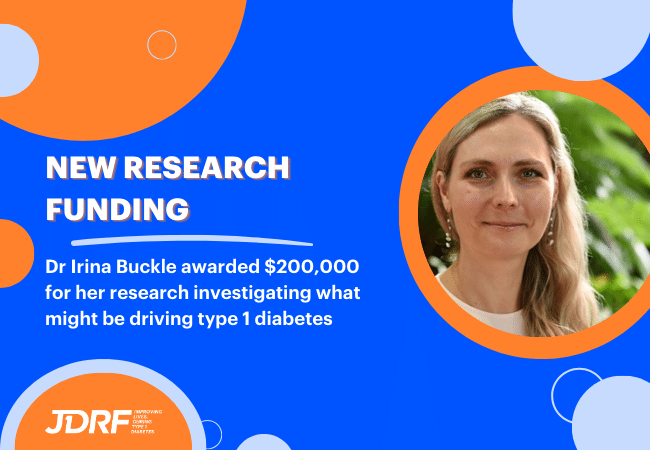T1D Research Roundup: January
Every month, we round up the most exciting T1D research stories from around the world – the new advances in treatment, devices and knowledge that are making the biggest impact in the fight to cure, treat and prevent T1D.
Here’s what you need to know in T1D research this month:
T1D screening success in Germany
A study of nearly 100,000 children in Germany, supported by JDRF, has shown that screening the population for T1D risk, before symptoms start, can greatly reduce rates of diabetic ketoacidosis (DKA). Children in the Fr1da study were screened for islet autoantibodies – markers in the blood that show a person is at high risk of developing T1D. The rate of DKA in the study was less than 5%, compared to the usual rate of 20% in Germany. The success of the Fr1da study shows that a similar program would not only be feasible in other countries, but that it could have significant benefits for children with T1D and their families.
New form of insulin discovered
Researchers at the Florey Institute of Neuroscience and Mental Health at the University of Melbourne have made a discovery that could improve insulin delivery via pumps. The new compound – glycoinsulin – has the same blood sugar lowering effect as standard insulin, but doesn’t form fibrils – clumps of insulin that can sometimes block pump delivery. Without the risk of blockage, glycoinsulin could mean less frequent infusion set changes for pump users. The team plans to start clinical trials of the glycoinsulin in the future, and hopes it will eventually be a safer, more cost effective option for pump users.
ENDIA study extended for 3 years
The ENDIA study – Australia’s largest study into the causes of T1D – received $8.25 million in funding from JDRF Australia and The Leona M. and Harry B. Helmsley Charitable Trust. The funding will be used to continue follow-up of ENDIA’s 1500 participants for a further three years. Participants in ENDIA are seen every three to six months until the infants are 3 years old, and the data gathered at these follow ups is helping researchers understand what causes T1D. By understanding the factors that cause T1D to develop, researchers hope to find new ways to prevent the condition.
Dual hormone artificial pancreas fast-tracked
In the US, a pocket-sized artificial pancreas known as iLet has been granted breakthrough status by the FDA – meaning its development and approval will be fast-tracked. Unlike other closed loop systems in development, the iLet device can pump two hormones: insulin and glucagon. Glucagon can help raise blood sugar levels if they become too low, meaning the device could potentially help users manage their blood sugar levels with less chance of hypos.
Another target for preventing T1D
At the Pacific Northwest National Laboratory in the US, researchers have discovered an important protein that can delay the onset of T1D in mice. Treating mice with the protein, known as GDF15, reduced the development of T1D by over 50%. GDF15 is known for its protective effects in other parts of the body, but had never before been studied in islet cells. Researchers are hopeful that GDF15 could be a target for new treatments to delay the onset of T1D.
Looking at genes to diagnose LADA
In the US, a team at the Children’s Hospital of Philadelphia have discovered a genetic marker that could help doctors to distinguish latent autoimmune diabetes in adults (LADA, or type 1.5 diabetes) from other forms of diabetes. People with LADA are often misdiagnosed, as the condition shares similarities with both type 1 and type 2 diabetes. Researchers hope that a genetic test could one day be a more straightforward, inexpensive way to diagnose people with LADA.
Interested in hearing more about research & clinical trials? Sign up to be a JDRF Game Changer and receive regular updates on the latest T1D research.




